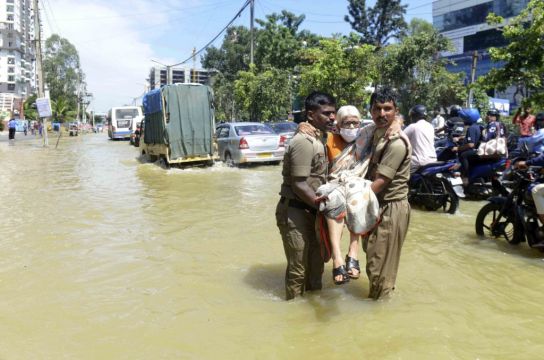Much of the southern Indian city of Bengaluru was under water on Tuesday, as two days of torrential rains caused widespread power cuts and heavy floods that swept into homes and submerged roads.
With several parts of the city still heavily waterlogged, videos on social media showed people hopping on to tractors to get to work.
Many schools were shut on Monday and authorities warned of interruptions to the water supply. Boats were deployed to rescue people submerged in floodwater.
The city, dubbed India’s tech capital, previously known as Bangalore, is home to several technology companies and many of their offices have been lashed by the rains, prompting employees to work from home.

Even though September is usually the wettest month in Bengaluru, this year has seen more rain than normal.
According to the India meteorological department, Karnataka, the southern state that is home to Bengaluru, is among the regions that have received maximum rainfall this year.
It has seen 34 per cent more rainfall in the past three months than it usually receives this time of the year.
While there is no direct connection between the excessive rains in Bengaluru and climate change, there is growing evidence that the monsoons, the most important weather system for the Indian subcontinent, are being altered due to climate change.
Scientists say this is making extreme events such as excess rainfall the new normal.







